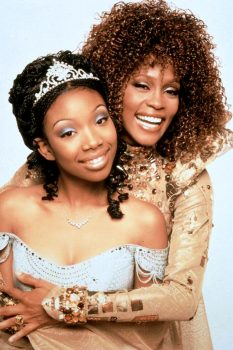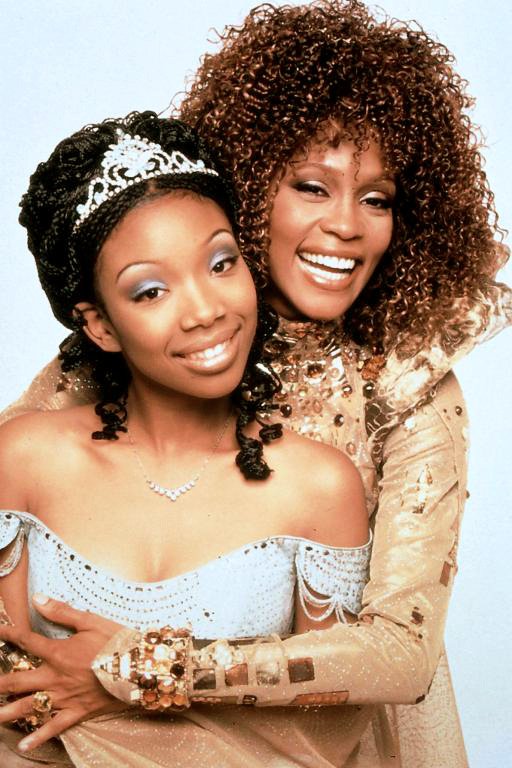At the end of the month, there will be a television anniversary that may not be significant to many. When the 1997 TV production of “Rodgers and Hammerstein’s Cinderella” premiered on ABC in 1997, it was hailed as one of the most successful TV musicals in years and viewers did love it, 60 million of them. But, it has endured as little more than a footnote on the résumé of its fêted cast and crew. And, yet, although it seems an unusual choice for the column, I wanted to pay it some attention
This was the second remake of the “Rodgers and Hammerstein’s Cinderella” written for Julie Andrews in 1957 (the first remake was a Lesley Ann Warren version in 1965). And, still, I’d swear on the altar of all things magical that this is the finest adaptation of the Cinderella story. There are myriad reasons, but principally because this Cinderella has more on its mind than just the girl at the centre.

An essential issue with the 1950 Disney animated “Cinderella,” and really any adaptation of the tale, is the title character’s potential for being charming but somewhat dull. The ABC version may seem to be doing itself no favours by casting pop sensation of the 90s (and not quite an actress) Brandy Norwood in the lead role. Unlike Julie Andrews, she’s no natural thespian but her general diffidence in character on screen is an integral part of this version’s take on the story.
In this adaptation, from Robert Freedman, the Prince (disguised as a pauper to experience the real word) and Cinderella meet each other by happenstance in the town and are charmed by each other. Both of them are longing to leave the lives they’re currently living. This Cinderella is less interested in ascending to royalty, specifically, and more focused on finding somewhere away from her Stepmother, where she’s appreciated. The Prince is facing his own issues of a King and Queen who want him married sooner, rather than later.
Rewatching the film recently with my niece, I was reminded of how the film examines more than just Cinderella at its centre. Bernadette Peters, as the evil Stepmother, offers the film’s deftest turn. Too often the role is regarded as evil without cause. There is not much dramatic tension in the A plot of any “Cinderella” tale, but here the B plot of the family is home to delicious dramatic tension built from the references to Cinderella’s dead father and the Stepmother’s knowing glances at her, palpably worried at the threat she poses to her girls. This is still a production meant for children, so the gradations come from performance more than text but it is there.
It all comes to a head in the film’s finest scene, which is only peripherally about romance. The ladies come home after the ball (disastrous for the Stepsisters, wonderful for Cinderella) and reminisce about the possibility of “A Lovely Night” that could have been with the prince. The dramatically ironic moment as Cinderella “supposes” what the ball would have been like finds its climax when a fateful curtsy cues the Stepmother in to Cinderella’s identity as the anonymous princess. (It’s a lovely callback to Lady Tremaine’s realisation in the animated version). It’s a moment that manages to eke out legitimate tension from a slight moment, and 90% of that is owed to Peters.
But, lest this lopsided praise song suggest this Cinderella is a Maleficent-esque tale where the Stepmother is the lead, let me confess this piece truly seems to exist as an ensemble. From Whoopi Goldberg’s delightfully officious Queen Mother to Jason Alexander’s harried steward to Veanne Cox’s gigging Calliope to Victor Garber’s noncommittal King, director Robert Iscove wants to give everyone their moment. This “Cinderella” feels generous and kind and charming in the best of ways.
I want to focus, though, one what I found most compelling about the film this time around. It is a charm which builds when its ethnically diverse cast is considered. Paolo Montalban, a Filipino newcomer at the time, sings beautifully as the Prince and, yes, he and Brandy are the weakest of the cast (if only on a scale) but the melange of races on display harkens to the film’s theatrical roots. Theatre has always been more willing to incorporate blind casting than film, and though I’ve since heard this adaptation’s casting referred to as gimmicky, where else but in a magical kingdom can a black woman and a white man make a Filipino son with a white Steward who speaks with an (inexplicable) pseudo-Italian accent?
The film never questions the logics of its cast’s ethnicity. I did not as a child and neither did my niece. Is it treacly to surmise that aspect of it as an example of impossible things happening everywhere? Probably. But, the film’s opening of Whitney Houston (also a producer) as the Fairy Godmother telling us “impossible things are happening everywhere” is a welcome encouragement to succumb to the world offered. Houston produced the enterprise and there’s something subtly political about the way race blends so easily within the film.
This “Cinderella” is gorgeous with its Emmy-winning Art Direction and Emmy-nominated Costume Design and Hairstyling. But it’s brightly coloured sheen and spiffy choreography (courtesy of Rob Marshall’s Emmy-nominated work half a decade before “Chicago”) is not trying to hide a centre that’s flat. It’s the same (very) simple story, but simple aspects like this Cinderella’s mourning for her dead father, or the Prince actually recognising Cinderella before even trying on the shoe, make it even more effective. It might not be on anyone’s list of “bests” but its existence is more than incidental. There’s something about its innocence and its multicultural magical world. That innocence is compelling in fraught political times like these.
Have a comment? Write to Andrew at almasydk@gmail.com

